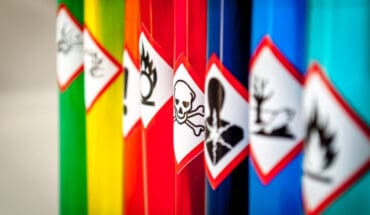We’ve gained a new weapon in the fight against harmful and often antibiotic-resistant pathogens with the development of a unique material engineered to limit disease spread and replace current cumbersome cleaning protocols on high-touch surfaces like door knobs and hand rails.
Using the Canadian Light Source (CLS) at the University of Saskatchewan (USask), researchers from the University of Windsor (UWindsor) have developed and tested a compound of ionic (salt-based) fluids and copper nanoparticles that can coat surfaces and provide germ-free protection that lasts far longer than conventional bleach-based cleaning. For Dr. Abhinandan (Ronnie) Banerjee, the composite material is far superior to “somebody with bleach and a rag trying to keep surfaces sanitized.”
Early in the Covid-19 pandemic, Banerjee and colleagues on the UWindsor’s Trant Team — a research group focused on synthetic bioorganic materials — set their sights on improving sanitizing protocols, which at the time often involved frequent application of compounds like bleach. “The problem with conventional sanitization techniques is it’s not a one-and-done kind of thing,” they said. “It requires a dedicated employee or automation” to keep surfaces germ free. Additionally, frequent wiping of a surface can etch the underlying material, creating even more opportunities for pathogens to gather.
The team came up with a material that takes advantage of copper’s natural germicidal properties. Now they’re formulating a new combination of materials that will be easy to apply to surfaces and durable. Banerjee explained the copper nanoparticles are electrostatically attracted to the cell walls of pathogens, “which they weaken and break down, essentially causing bacterial annihilation.”
The group’s results are published in the journal RSC Sustainability under the creative title “Lethal Weapon IL (Ionic Liquid).” A recently awarded provisional patent gives Banerjee and their team time to find an industrial sponsor to aid in the eventual commercialization of the microbial coating material.
Sima Dehghandokht, a UWindsor PhD student who brought her food microbiology expertise to the Trant group two years ago, said the material’s potential applications go beyond door knobs, hand rails and elevator buttons, to include hospitals, greenhouses, agri-food production facilities and even scientific labs “where we deal with pathogens and harmful bacteria all the time. This could make scientists’ lives easier.”
It is important, she added, to consider the harmful environmental effects of antimicrobials like bleach, given they need repeated applications and then product disposal.
Both researchers acknowledge there are still questions to be answered about the copper-based material. Determining exactly how long the coating remains effective is an important next step, as is exploring the antimicrobial effects of other nanoparticles like zinc and iron, both of which are “literally dirt cheap,” said Banerjee. “We need to look at how changing the properties of the nanoparticles may have an effect on extending the antimicrobial life of the coating but also maybe killing more aggressive bacteria that are not easily killed by a simple rub with bleach.”
“We also need to check the toxicity of the compound,” said Dahghandokht, to determine if contact with the material could cause an allergic reaction. Fortunately, the Trant Team has access to a 3D bioprinter that can replicate human skin cell lines for further testing.
Banerjee and Dahghandokht agree having access to CLS technology is, and remains, critical to the development of their antimicrobial coating.
“We could not have done this work without the high-intensity light of the CLS,” Banerjee said. “We were able to see what’s happening with the copper nanoparticles over time and how they released a payload that is toxic to bacteria. It (the CLS) has been an integral part of this research.”
- Gut microbiome could delay onset of type 1 diabetes - 3rd April 2025
- The da Vinci 5 Robot Is Set To Transform Bariatric Care: - 31st March 2025
- Beyond money: the hidden drivers fuelling child food insecurity - 31st March 2025






